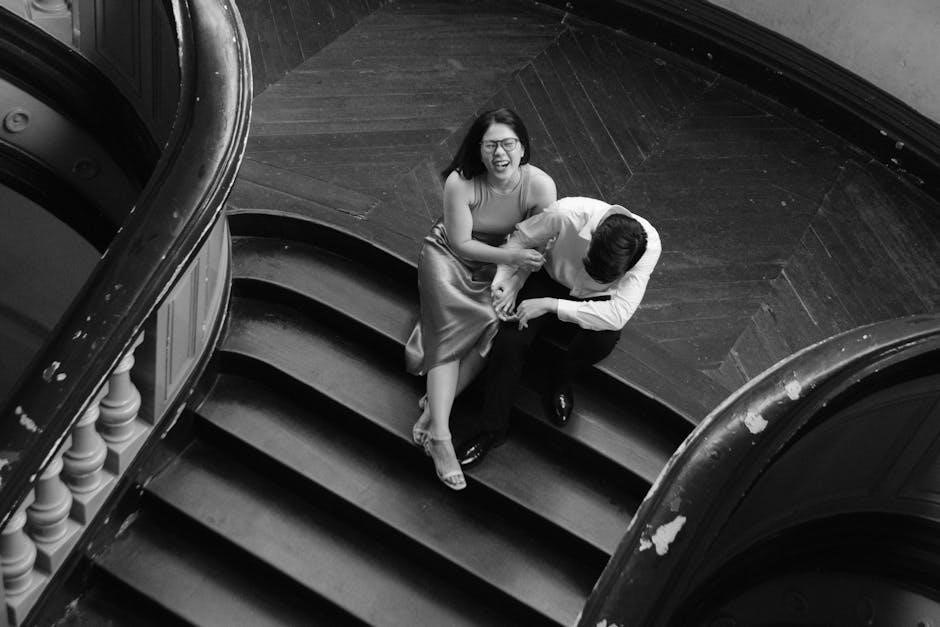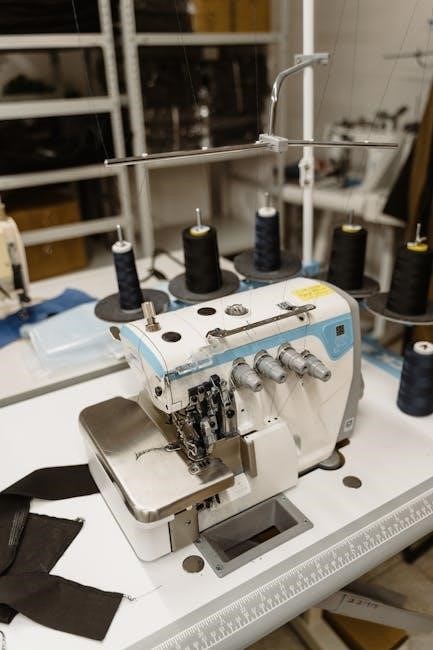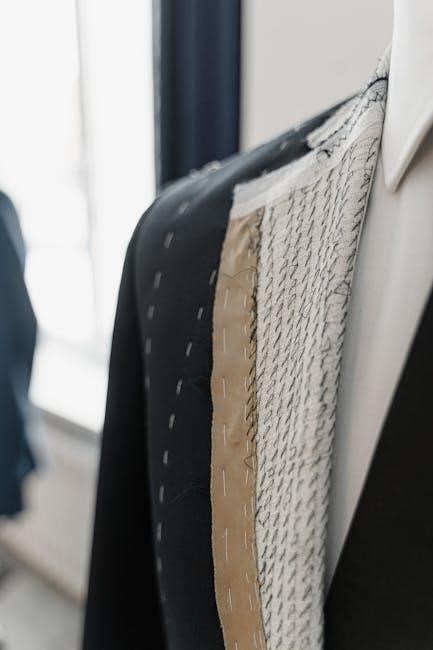Understanding dress shirt measurements is crucial for a perfect fit. It involves key body measurements like neck, chest, and sleeve length. Proper tools and accurate sizing ensure comfort and style, making it essential to grasp the basics before choosing or tailoring a shirt.
Why Proper Fit Matters
A well-fitted dress shirt enhances confidence and professionalism, ensuring a polished appearance. Proper fit balances proportions, creating a flattering silhouette that complements body type. It prevents issues like restrictive movement or an unflattering drape, ensuring comfort and functionality. A shirt that fits correctly draws positive attention, making it essential for first impressions. Ill-fitting shirts can appear sloppy or overly tight, detracting from overall style. Tailored measurements ensure the garment skims the body naturally, avoiding boxiness or constriction. Ultimately, proper fit reflects attention to detail, elevating both casual and formal looks. It’s a cornerstone of timeless fashion, making it worth the effort to measure and choose wisely.
Basic Tools Needed for Measurement
To accurately measure for a dress shirt, you’ll need a few essential tools. A flexible sewing tape measure is the most critical tool, as it allows you to take precise neck, chest, and sleeve measurements. A mirror is helpful to ensure the tape is properly positioned, especially around the neck. A pen and paper are necessary to record your measurements. Optionally, a well-fitting dress shirt can serve as a reference for length and fit. Having someone assist you can make the process smoother, particularly for sleeve length. These tools ensure accuracy and simplicity, making the measurement process efficient and reliable for the best fit.
Key Measurements for a Dress Shirt
Measurements include neck, chest, sleeve length, shoulder width, and shirt length to ensure a proper fit. These dimensions guide size selection and tailoring for comfort and style.
Neck Measurement
Neck measurement is the foundation of a well-fitting dress shirt. To measure accurately, place the tape around the base of your neck where the collar sits. Keep the tape snug but not tight, ensuring it’s parallel to the floor. Round up to the nearest half-inch for the perfect fit. This measurement determines the collar size, which is crucial for both comfort and style. A proper neck fit ensures the shirt sits comfortably without being too restrictive or overly loose. Accurate neck measurement is essential for selecting the right size, as it directly impacts how the shirt drapes across your shoulders and chest.
Chest Measurement
The chest measurement is taken around the widest part of your torso, typically just under the armpits. Stand straight and relax, ensuring the tape isn’t too tight or loose. The measurement should be snug and level, parallel to the floor. This measurement helps determine how the shirt will fit across your body. For dress shirts, double the chest measurement gives the full circumference. Accurate chest measurement ensures the shirt isn’t too tight or overly loose, providing comfort and a flattering fit. It’s crucial for achieving the right balance between style and comfort in your dress shirt.
Sleeve Length Measurement
Sleeve length is measured from the center back of your neck, over your shoulder, and down to your wrist. This ensures the cuff sits correctly on your arm. Stand straight with arms slightly bent for accuracy. The tape should follow your natural shoulder slope without stretching or sagging. Proper sleeve length prevents the shirt from looking too short or too long. Measure to the base of your thumb for the perfect fit. Accurate sleeve length is key for both comfort and style, ensuring the shirt moves naturally with your arms. Avoid common mistakes like measuring too loosely or too tightly for the best results.
Shoulder Width Measurement
Shoulder width measurement is crucial for ensuring the dress shirt fits properly across the upper body. To measure, stand straight and place the tape horizontally across the back, from one shoulder tip to the other, keeping it level and parallel to the floor; This measurement helps determine how the shirt will sit on your frame. Proper shoulder width ensures the garment isn’t too tight or too loose, allowing for a full range of motion. Accuracy here prevents issues like restricted movement or an ill-fitting silhouette. Many overlook this step, but it’s vital for achieving a tailored look and optimal comfort.
Shirt Length Measurement
Shirt length measurement ensures the dress shirt fits appropriately, whether tucked in or worn untucked. To measure, lay the shirt flat and extend the tape from the center of the collar at the back to the hem. Proper length ensures comfort and style, avoiding shirts that are too short or too long. This measurement is especially important for shorter men, as it impacts the overall proportions. Accurate shirt length ensures the garment drapes well, accommodating different body types and preferences; It’s a critical factor in achieving a balanced, polished look, whether for formal or casual occasions.

How Dress Shirt Sizes Work
Dress shirt sizes combine neck and sleeve measurements, often using numeric or alpha sizing. Proper fit varies by brand, requiring accurate body measurements for the best results.
Numeric vs. Alpha Sizing
Dress shirts are sized using two main systems: numeric and alpha sizing. Numeric sizing combines neck and sleeve measurements, such as “15 34/35,” where the first number is the neck size, and the second denotes sleeve length. This system is precise but can vary slightly between brands. Alpha sizing uses general sizes like Small, Medium, and Large, offering simplicity but less accuracy. Numeric sizing is preferred for tailored fits, while alpha sizing is more common in casual or ready-to-wear shirts. Both systems aim to provide a comfortable fit, but numeric sizing is often more reliable for precise measurements. Understanding these differences helps in choosing the right size for your needs.
Standard vs. Slim Fit Measurements
Standard and slim fit measurements cater to different body types and preferences. Standard fit shirts offer a classic, roomier cut, with a broader chest and waist, making them suitable for a wider range of body types. Slim fit shirts are tailored closer to the body, with narrower measurements across the chest, waist, and sleeves, creating a modern, streamlined look. While standard fits prioritize comfort and ease, slim fits emphasize style and a more contemporary aesthetic. Both options ensure a well-fitted shirt, but the choice depends on personal preference and body shape. Accurate measurements are key to achieving the desired fit in either style.

Understanding Fit Options
Understanding fit options helps determine the most flattering dress shirt style based on body type and personal preference. Classic, slim, and athletic fits cater to different needs while ensuring comfort and style.
Athletic Fit
The athletic fit dress shirt is designed for individuals with a broader, more muscular build. It features a tailored cut that skims the body, offering a balance between comfort and style. This fit typically includes slightly broader shoulder measurements, a more defined chest area, and a longer sleeve length to accommodate muscular arms. The athletic fit minimizes excess fabric, creating a streamlined appearance while allowing ease of movement. It’s ideal for those who want a sharp, modern look without compromising on comfort. This style is particularly popular among active individuals or those with an athletic physique, ensuring a flattering silhouette in both casual and professional settings.
Slim Fit
A slim-fit dress shirt is tailored to create a contemporary, streamlined appearance. It features narrower measurements across the chest, shoulders, and sleeves compared to classic or athletic fits. Designed for a modern aesthetic, this fit skims the body, reducing excess fabric while maintaining comfort. The sleeves are slightly shorter, and the shirt length is often adjusted to complement the slimmer silhouette. Slim-fit shirts are ideal for those with a leaner build or who prefer a more fashion-forward look. They are versatile, suitable for both casual and formal occasions, and pair well with tailored trousers or jeans for a polished yet modern style.
Classic Fit
A classic-fit dress shirt offers a traditional and comfortable silhouette, designed to accommodate a wide range of body types. It features a slightly looser cut through the chest, shoulders, and sleeves compared to slim-fit styles, providing ease of movement and a timeless appearance. The shirt length is standard, ensuring it stays tucked in neatly. This fit is ideal for those who prefer a relaxed yet professional look. It suits various occasions, from formal events to business meetings, and works well for men with broader builds or those who value comfort without sacrificing style. The classic fit remains a versatile and enduring choice in mens wardrobes.

Fabric and Color Considerations
Fabric weight and color significantly impact a dress shirt’s appearance and comfort; Lightweight fabrics drape smoothly, while heavier ones offer structure. Colors and patterns should complement your wardrobe and personal style.
How Fabric Weight Affects Fit
Fabric weight plays a crucial role in how a dress shirt fits and drapes. Lighter-weight fabrics, like cotton voile or linen, provide a relaxed, breathable fit, ideal for warm weather. They drape softly and are less structured, which can be flattering for slimmer builds. Heavier fabrics, such as twill or Oxford cloth, offer more substance and structure, creating a crisp, tailored appearance. These are perfect for cooler climates and formal occasions. The weight of the fabric also influences how it lays on the body, with heavier fabrics minimizing wrinkles and lighter ones offering a more natural, flowy silhouette.
Color and Pattern Matching
Color and pattern play a significant role in complementing your dress shirt fit. Solid colors are versatile and easy to pair, while patterns like stripes or checks add visual interest. Darker colors can create a slimmer appearance, while lighter shades may accentuate broader frames. When choosing patterns, consider your body type—vertical stripes can elongate shorter torsos, whereas horizontal patterns may widen shoulders. Ensure the color complements your skin tone and personal style. Coordinating with trousers, ties, or suits is essential for a polished look. Balancing color and pattern ensures your shirt enhances your overall aesthetic without overwhelming it.

Common Measurement Mistakes
- Overlooking sleeve length can lead to poor fit and functionality.
- Inaccurate chest measurements often result in shirts that are too tight or loose.
Overlooking Sleeve Length
One of the most common mistakes when measuring for a dress shirt is neglecting the sleeve length. Proper sleeve length ensures the shirt fits well under a jacket or tie, avoiding an ill-fitting appearance. To measure accurately, start at the center back of the neck, run the tape over the shoulder, and down to the wrist. Many people underestimate or overestimate this length, leading to sleeves that are too short or excessively long. Incorrect sleeve length can compromise both comfort and style, making it essential to prioritize this measurement for a polished look. Always double-check this measurement for accuracy.
Inaccurate Chest Measurements
Accurate chest measurements are essential for a dress shirt to fit properly; The chest measurement is taken around the widest part of the chest, typically just under the armpits. A common mistake is not expanding the chest slightly during measurement, which can lead to a shirt that feels too tight. Conversely, overestimating the chest size can result in a loose, unflattering fit. Ensuring the tape measure is level and not too snug or too loose is crucial. Incorrect chest measurements can affect how the shirt drapes and how comfortable it feels. Always use a sizing chart to cross-reference your measurements for the best fit.

Where to Buy Dress Shirts
Explore online retailers with detailed sizing charts for accurate fits, or visit brick-and-mortar stores to physically try shirts and experience fabric quality firsthand.
Online Retailers with Sizing Charts
Online retailers offer convenience and detailed sizing charts to help you find the perfect fit. Many websites provide specific measurements for neck, chest, and sleeve length, ensuring accuracy. Some platforms allow you to filter shirts based on your body measurements, making shopping easier. Additionally, most reputable brands include garment measurements in their product descriptions, enabling you to compare with your own measurements. If unsure, contacting customer support for precise measurements is a great option. This ensures you select a shirt that aligns with your fit preferences, whether slim, classic, or athletic. Online sizing tools and charts are invaluable for achieving the right fit without in-person try-ons.
Brick-and-Mortar Stores
Brick-and-mortar stores provide a hands-on experience for dress shirt shopping. Sales associates can assist with measurements, ensuring a precise fit. Trying shirts on in-store eliminates guesswork, allowing you to feel the fabric and assess the cut. Many stores maintain consistent sizing, making future purchases reliable. Additionally, alterations are often available, offering customization. The tactile experience of handling fabrics and seeing colors firsthand enhances decision-making. For those who value immediate feedback and personalized service, physical stores remain the preferred choice. This traditional approach ensures satisfaction, blending expert guidance with the ability to see and feel the product before purchase.
Mastering dress shirt measurements ensures a tailored fit and enhanced style. By understanding key measurements like neck, chest, and sleeve length, you can choose shirts that flatter your physique. Fabric weight and color considerations add depth to your wardrobe, while avoiding common mistakes guarantees satisfaction. Whether shopping online or in-store, sizing charts and expert advice guide your selections. Investing time in accurate measurements and understanding fit options empowers you to build a wardrobe that combines comfort and elegance. A well-fitting dress shirt elevates confidence, making it a foundational piece in any man’s attire. This guide equips you with the tools to make informed, stylish choices.

